- Author: Elaine Lander
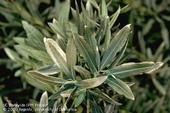
With the recent time change along with a change in temperatures, landscaping practices for pests need some adjusting too. We're sharing a few recommended tasks to help prevent insect pests, diseases, and environmental disorders in landscapes. Looking for additional tips? You can subscribe to our Seasonal Landscape IPM Checklist for monthly landscaping reminders delivered straight to your email inbox.
Frost Protection
Cold injury can occur when temperatures decline rapidly after warm weather, killing bark, buds, flowers and...
- Author: Janet Hartin
- Posted by: Elaine Lander
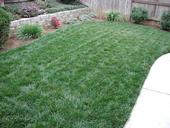
Your customers want their lawns to be beautiful and functional (Figure 1) but dead patches or other problems sometimes occur. Figuring out the cause of turfgrass damage can be a challenge since many plant pathogens affect grasses as well as numerous abiotic (non-living) disorders. can impact the quality of lawns, playing fields, and other turf areas.
Keeping turfgrass healthy is essential for reducing damage due to both diseases and abiotic disorders. Following recommended practices regarding irrigation scheduling, integrated pest management, fertility, mowing height, soil aeration, and other measures is your customer's best line of defense.
Identify the cause of...
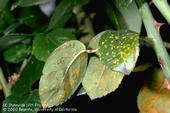
Roses in the garden can be infected with a variety of bacteria, fungi, and viruses, leading to diseases like powdery mildew and rust. Roses may also be damaged by nutrient deficiencies and other environmental problems.
Our Pest Notes: Roses: Diseases and Disorders was recently updated by University of California experts John Karlik, Deborah Golino, and Maher Al Rwahnih. This free publication provides an integrated approach to managing rose problems that includes careful variety choice, proper irrigation, correct pruning, and sanitation. Although some rose enthusiasts might consider regular application of fungicides a necessary...
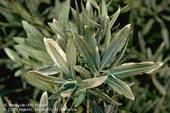
Days are getting shorter and evenings cooler as winter approaches. Sweater weather also means a change in the to-do list around the yard.
Here are a few things to consider when preparing your landscapes and gardens for winter.
Frost
- Protect sensitive plants from cold injury when freezing or frost is predicted. Cover plants with cloth or a similar material at night, leaving the covers open at the bottom so heat from soil can help warm plants.
- When frost or freezing is expected, irrigate dry topsoil at least 3 days before the cold weather to increase the soil's ability to retain...
- Author: Dennis Pittenger
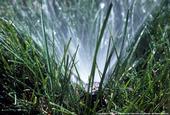
[From the August 2015 issue of the UC IPM Green Bulletin]
Q. How much water do landscapes use in California?
A. Landscape irrigation accounts for only about 9% of total statewide developed water use, but the percentage varies widely among communities. Water applied to landscapes is estimated to account for about 50% of residential water consumption statewide, but the amount varies from about 30% in some coastal communities to 60% or more in many inland suburban communities.
Q. Does a landscape have to...


